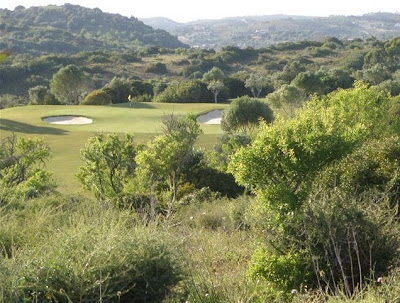Following in the footsteps of the world’s most famous public course - St.Andrews Links, the Fife Golf Trust has stepped up its commitment to environmental and social performance. The trust enrolled all seven of its public golf facilities in the GEO OnCourse™ programme, to work toward the international ecolabel for sustainable golf, GEO Certified™.
Confirming the commitment at a seminar on green golf held in St. Andrews, Paul Murphy, the new head of golf course management for the Fife Golf Trust said:
“The seven courses we oversee across the Kingdom of Fife are fantastic recreational resources, very well used by local people of all ages and backgrounds. Our vision is to make them even better by deepening the positive impact in their communities, for golfers and non-golfers; to make them as ecologically rich as we can; and to be even more efficient in our use of resources such as water, energy, fertilisers and pesticides.
We considered a number of ways to achieve our vision, and quickly agreed that the GEO On Course™ programme is far and away the best means to help us plan and coordinate the effort, encouraging and making it easier for Greenkeepers and other staff to make improvements that bring practical results. And for us, overseeing several courses, the “management group” tools are a good way for other managers and me to track and support the work going on at each site.
Fife Council's policies on sustainability - covering biodiversity, waste, climate change, pollution prevention and social inclusion are very strong and our golf facilities are well placed to meet them.
We'll be working hard to be the first municipality in the world to have all our clubs and courses GEO Certified™ in the year ahead”.
Kelli Jerome, GEO Director of Programme Management said:
"Municipal golf courses are vital for good quality, affordable and accessible golf in local communities. We’re pleased that the OnCourse™ programme has been selected to help Paul and his team reduce operational costs and improve the golfing and ecological quality of the courses.
Everything the GEO Certified™ ecolabel stands for matches well with government policies in climate change, biodiversity, waste, social inclusion, health, youth recreation and environmental quality. It will be great to see more municipal golf courses following the example Fife Golf Trust is setting.”
---
About GEO
GEO is a stakeholder-funded, not-for-profit organization, dedicated to helping the global golf community establish leadership in environmental enhancement and corporate responsibility. GEO Certified™ is the world's most constructive and credible ecolabel for golf course and club management.
GEO works with golf, government and environmental organizations worldwide, including The European Tour, United Nations Environment Programme, The R&A and the Club Managers Association of America. For more information, please see: www.golfenvironment.org
Media Enquiries: Kelli Jerome, GEO Director of Programme Management
T: +44 1620 895100E: kelli@golfenvironment.org
“The seven courses we oversee across the Kingdom of Fife are fantastic recreational resources, very well used by local people of all ages and backgrounds. Our vision is to make them even better by deepening the positive impact in their communities, for golfers and non-golfers; to make them as ecologically rich as we can; and to be even more efficient in our use of resources such as water, energy, fertilisers and pesticides.
We considered a number of ways to achieve our vision, and quickly agreed that the GEO On Course™ programme is far and away the best means to help us plan and coordinate the effort, encouraging and making it easier for Greenkeepers and other staff to make improvements that bring practical results. And for us, overseeing several courses, the “management group” tools are a good way for other managers and me to track and support the work going on at each site.
Fife Council's policies on sustainability - covering biodiversity, waste, climate change, pollution prevention and social inclusion are very strong and our golf facilities are well placed to meet them.
We'll be working hard to be the first municipality in the world to have all our clubs and courses GEO Certified™ in the year ahead”.
Kelli Jerome, GEO Director of Programme Management said:
"Municipal golf courses are vital for good quality, affordable and accessible golf in local communities. We’re pleased that the OnCourse™ programme has been selected to help Paul and his team reduce operational costs and improve the golfing and ecological quality of the courses.
Everything the GEO Certified™ ecolabel stands for matches well with government policies in climate change, biodiversity, waste, social inclusion, health, youth recreation and environmental quality. It will be great to see more municipal golf courses following the example Fife Golf Trust is setting.”
---
About GEO
GEO is a stakeholder-funded, not-for-profit organization, dedicated to helping the global golf community establish leadership in environmental enhancement and corporate responsibility. GEO Certified™ is the world's most constructive and credible ecolabel for golf course and club management.
GEO works with golf, government and environmental organizations worldwide, including The European Tour, United Nations Environment Programme, The R&A and the Club Managers Association of America. For more information, please see: www.golfenvironment.org
Media Enquiries: Kelli Jerome, GEO Director of Programme Management
T: +44 1620 895100E: kelli@golfenvironment.org




